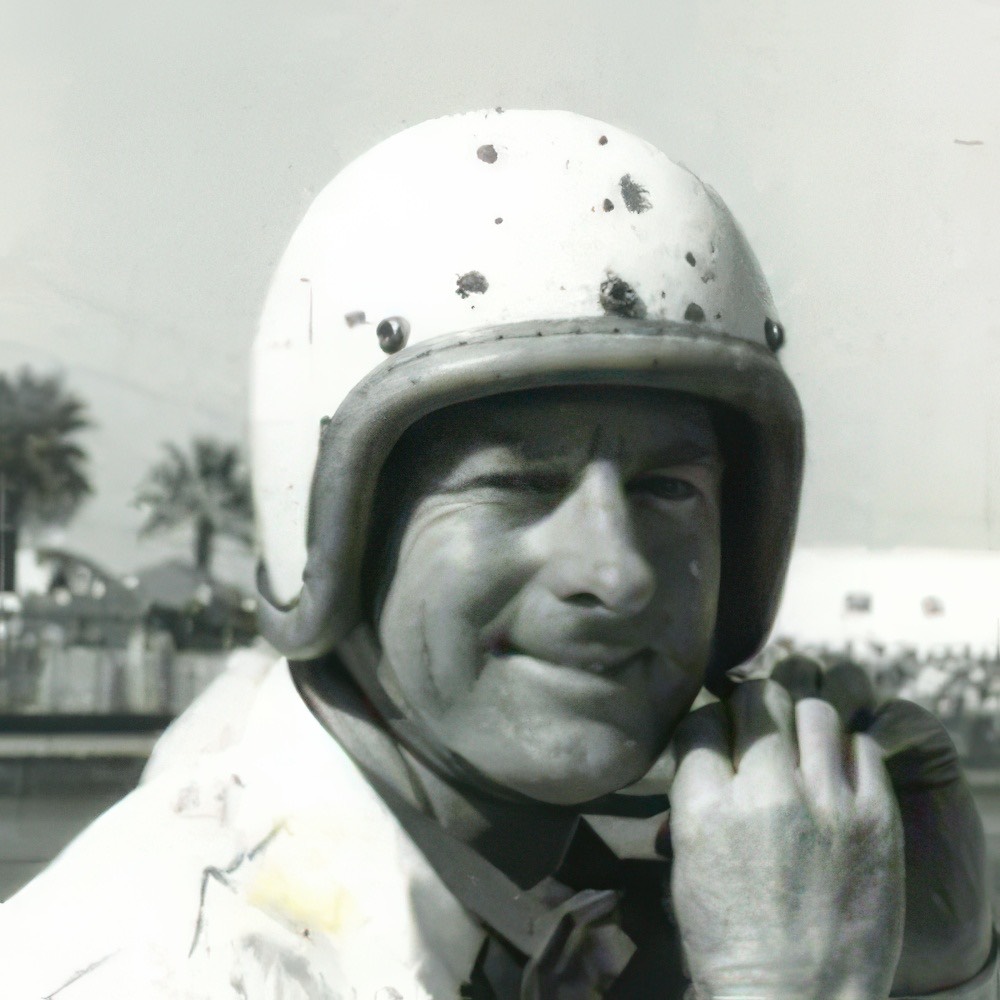
Sam Hanks
Career Statistics
Biography
Samuel Dwight Hanks (13 July 1914 - 27 June 1994) was an American racing driver who won the 1957 Indianapolis 500 and competed in Formula One through the Indianapolis 500's inclusion in the World Championship. Born in Columbus, Ohio, Hanks lived in Alhambra, California from age six, growing up in Southern California's burgeoning hot rod and racing culture. Hanks was a barnstormer who raced midget cars and Championship cars throughout the 1940s and 1950s, establishing himself as one of American open-wheel racing's most consistent and skilled competitors. He won the National Midget Championship in 1949, demonstrating his mastery of the smaller, nimble cars that were popular in American racing.
He also won the Pacific Coast Stock Car title in 1956, showcasing his versatility across different racing disciplines. Hanks drove in 12 Indianapolis 500 races between 1948 and 1957, repeatedly coming agonizingly close to victory before finally achieving his dream. He finished second in 1956 and third twice (1952 and 1953), demonstrating consistent competitiveness at America's greatest race while the ultimate prize eluded him for years. These near-misses made his eventual victory even sweeter.
In 1957, on his thirteenth attempt at the Indianapolis 500, Hanks finally led the field home to victory, becoming the driver with the most Indianapolis 500 starts before winning, a record that highlighted both his persistence and his refusal to give up despite years of heartbreak. At age 42 years and 360 days, Hanks was the oldest driver to have won the Indianapolis 500 at that time, demonstrating that experience and consistency could triumph over youth. In a decision that shocked the racing world, Hanks retired immediately after his Indianapolis 500 victory, going out on top rather than risking his perfect final race. His retirement announcement came at the post-race celebration, with Hanks explaining that he had achieved his life's racing goal and preferred to end his career with the ultimate triumph rather than continue and risk diminishing his legacy.
From 1958 to 1963, Hanks drove the pace car at the Indianapolis 500, maintaining his connection to the race he had won while transitioning to a less dangerous role. His presence as pace car driver allowed fans to continue celebrating his achievement year after year. Because the Indianapolis 500 was included as a round of the Formula One World Championship from 1950 to 1960, Hanks's 1957 victory counted as a Formula One World Championship race win. The race was round three of eight in the 1957 World Championship, and Hanks earned eight championship points for his victory.
Despite not competing in any other World Championship events that year, Hanks finished eighth in the final 1957 season standings based solely on his Indianapolis 500 performance, a unique situation that highlighted the unusual nature of including the 500 in the Formula One championship. Having experienced ill health for three years, Sam Hanks died at his home in Pacific Palisades, California, on 27 June 1994, at age 79. He is remembered as one of American racing's most persistent and ultimately successful drivers, a competitor who refused to quit despite years of near-misses and who retired at the perfect moment, ensuring his legacy would forever be associated with his greatest triumph.